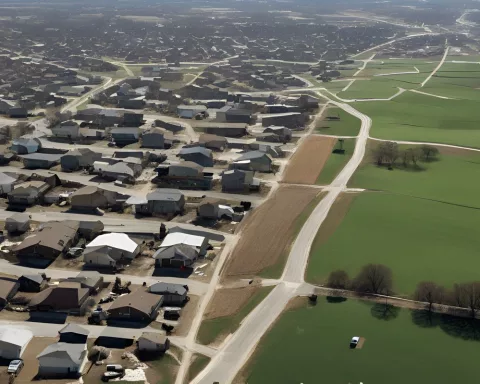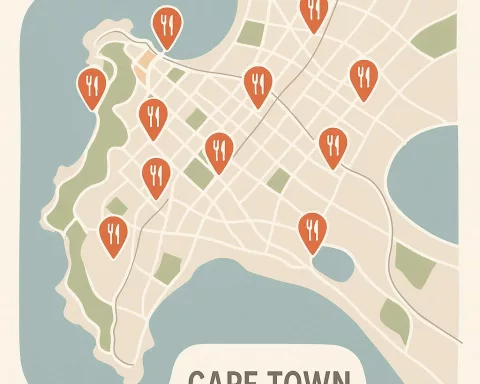In South Africa, rising worries about social unrest are echoing loudly from busy cities like Johannesburg and Durban. The main issues fueling this unrest include deep inequality, bad leadership, and high youth unemployment, with many young people feeling hopeless and angry. The failing water services only add to the frustration, leading to protests and unrest that disrupt daily life and business. As citizens and leaders call for change, there’s a powerful hope that South Africa’s resilient spirit can pave the way for a brighter and fairer future.
What are the main causes of social unrest in South Africa?
Social unrest in South Africa stems from several key factors:
- Inequality: South Africa is one of the most unequal countries globally, exacerbating social tensions.
- Governance Failures: Poor leadership and mismanagement fuel public discontent.
- Youth Unemployment: High rates of joblessness among youth contribute to despair and protests.
- Infrastructure Issues: Failing services, particularly water shortages, disrupt daily life and business operations.
Emerging Unrest Across the Nation
In the bustling heart of South Africa, from Johannesburg’s energetic streets to Durban’s coastal expanses, a rising tide of concern is palpable. The anxiety is not limited to public spaces alone; it reverberates through corporate boardrooms and workspaces. According to PwC’s 26th Global CEO Survey and the Africa Business Agenda Report for 2023, a staggering 67% of South African CEOs anticipate significant disruptions spurred by social unrest in the coming year. This figure is alarmingly higher than the global average of 26% and the continental average of 46%, highlighting the grave concerns specific to South Africa.
The root cause of this growing anxiety is the increasing inequality that characterizes the nation. South Africa is frequently cited as the most unequal region globally in terms of income and consumption per capita. This disparity, coupled with deteriorating public services, intensifies the pressure on both communities and businesses. President Cyril Ramaphosa has acknowledged the brewing discontent, particularly pointing to the failing water infrastructure as a significant contributor to public dissatisfaction. Frequent water outages have become a grim reality, leading to protests in provinces like Gauteng and the Eastern Cape.
Case Study: Thando Nkosi’s Struggles
Consider the plight of Thando Nkosi, a manufacturing executive based in Durban. Nkosi’s situation exemplifies the broader crisis facing many businesses. He articulates a fundamental truth: without water, businesses cannot operate effectively. The absence of this essential resource disrupts productivity, jeopardizes employee safety, and erodes long-term investment confidence. Nkosi’s experience underscores the direct link between service failures and social unrest. When communities endure prolonged water shortages, they resort to protests to voice their grievances, a situation that disrupts the entire socio-economic fabric.
PwC’s comprehensive analysis has identified five key drivers of social unrest in South Africa, each showing signs of worsening. Among these, the lack of job opportunities for the youth is particularly volatile. With millions of young South Africans unemployed and facing a bleak future, the sense of despair deepens. This demographic, rich in potential but hindered by systemic failures, forms a critical mass capable of triggering widespread upheaval.
Governance Failures and the Call for Change
Entrepreneur and investor Rob Hersov is a vocal critic of the current governance in South Africa. He warns that the country teeters on the edge of a tipping point, driven by years of poor leadership and mismanagement. Hersov’s outspoken commentary reflects a fundamental truth: the ongoing social unrest is not just about water shortages or power outages. It is a response to a deeper betrayal by the state, a reaction to systemic neglect and unfulfilled promises. Hersov argues that the combination of a disenfranchised youth, collapsing infrastructure, and a lack of accountability creates a volatile mix, steering the nation towards potential chaos.
Hersov’s call for radical change in leadership and governance mirrors a wider demand within South African society. People are weary of empty slogans and broken promises; they crave tangible solutions. This sentiment resonates across various sectors, from business executives to ordinary citizens, all seeking a stable and prosperous future. The need for effective governance and robust infrastructure development has never been more acute.
Reflections on History and Art
Historical parallels offer a valuable perspective on South Africa’s current challenges. The country’s struggle against apartheid, marked by resilience and a quest for equality, set a precedent for transformative change. Despite the progress made, the subsequent years have revealed a different kind of struggle—one against economic disparity and governance failures. The liberation movement, which once unified the nation, now serves as a poignant reminder of the promises yet to be fulfilled.
Artistic expressions also provide a powerful commentary on these times. Contemporary South African artists often address themes of inequality, identity, and resilience in their work. Their creations serve not just as aesthetic endeavors but as narratives that capture the socio-economic and political currents of the nation. Through their art, these creators offer both critique and hope, reflecting the complexities of a nation in flux.
The Path Ahead: Challenges and Opportunities
The intersection of history, art, and current socio-political dynamics paints a multifaceted picture of South Africa. It is a nation rich in resources and potential but hindered by systemic challenges. The stories of individuals like Thando Nkosi and the voices of critics like Rob Hersov highlight the urgent need for change. These narratives, grounded in personal experience and professional insight, emphasize the broader socio-economic issues at play.
Understanding South Africa’s present requires considering the broader context of its past and the potential pathways to its future. Lessons from history, commentary from the arts, and insights from business leaders converge to offer a comprehensive view of the challenges and opportunities ahead. The nation stands at a crossroads, where the actions taken today will shape the trajectory of tomorrow.
A Call to Action
Despite the challenges, an undercurrent of hope persists. South Africans have a history of resilience, an indomitable spirit that has seen them through some of the darkest chapters. This resilience, combined with a collective yearning for equitable progress and accountable governance, can guide the nation towards a more stable and prosperous future. It is a call to action for leaders, businesses, and citizens alike to forge a path that honors the promise of a better tomorrow.
Frequently Asked Questions (FAQ)
What are the primary causes of social unrest in South Africa?
Social unrest in South Africa is driven by several interconnected factors, including:
1. Inequality: The nation has one of the highest levels of inequality in the world, leading to social tensions.
2. Governance Failures: Poor leadership and mismanagement exacerbate public discontent.
3. Youth Unemployment: High unemployment rates among the youth contribute to feelings of hopelessness and despair.
4. Infrastructure Issues: Failing services, particularly concerning water access, disrupt daily life and business operations.
How is youth unemployment impacting social stability?
Youth unemployment is particularly critical in South Africa, where millions of young people are out of work. This demographic faces a bleak future, which fosters frustration and unrest. The lack of job opportunities contributes to a sense of despair, making it a volatile issue that could potentially trigger widespread social upheaval.
What role does infrastructure play in the current unrest?
Failing infrastructure, especially in water services, is a significant contributor to social unrest in South Africa. Frequent water shortages disrupt businesses and daily life, leading to protests. As highlighted by business leaders like Thando Nkosi, the inability to reliably access water jeopardizes productivity and fosters public frustration.
How do South African CEOs view the potential for social unrest?
According to PwC’s 26th Global CEO Survey, a striking 67% of South African CEOs expect significant disruptions due to social unrest in the upcoming year. This figure is notably higher than the global average and reflects the heightened anxiety surrounding governance issues and economic stability in the nation.
What criticisms are being made regarding governance in South Africa?
Critics like entrepreneur Rob Hersov have voiced serious concerns about the state of governance in South Africa. They argue that years of poor leadership and mismanagement have led the country to a tipping point. There is a growing demand for radical changes in leadership to address systemic neglect and unfulfilled promises that have contributed to the current crisis.
How can South Africa move toward a more stable and prosperous future?
Despite the challenges, there remains a strong undercurrent of hope among South Africans. The resilience of the nation, combined with a collective desire for equitable progress and accountable governance, can pave the way for a brighter future. It is essential for leaders, businesses, and citizens to unite in their efforts to address these socio-economic issues and build a more stable society.












